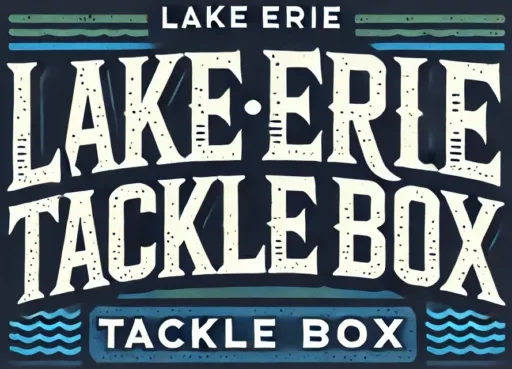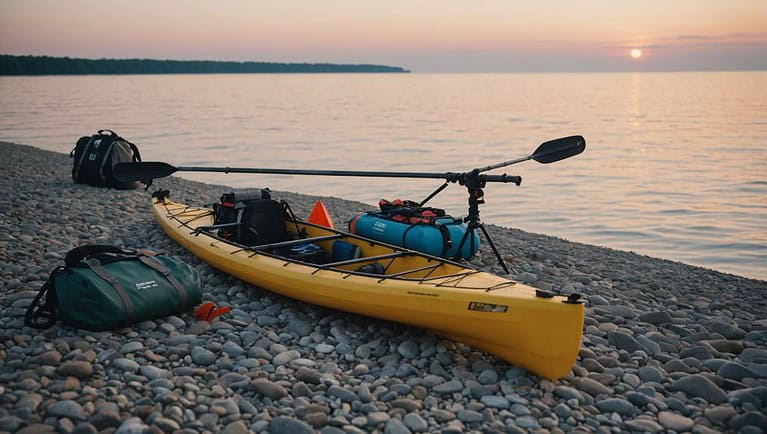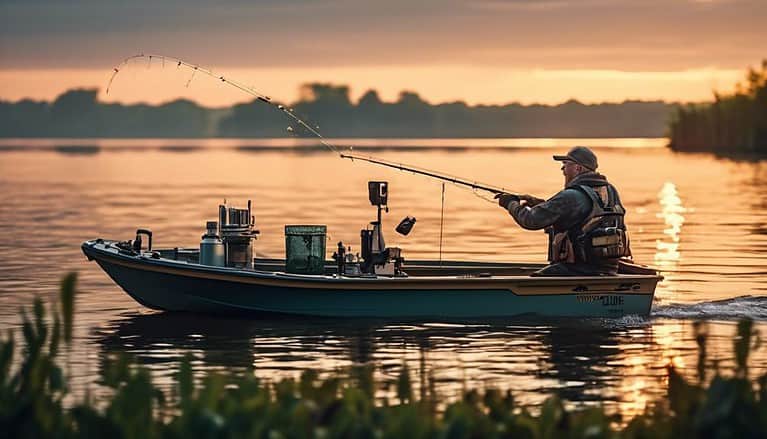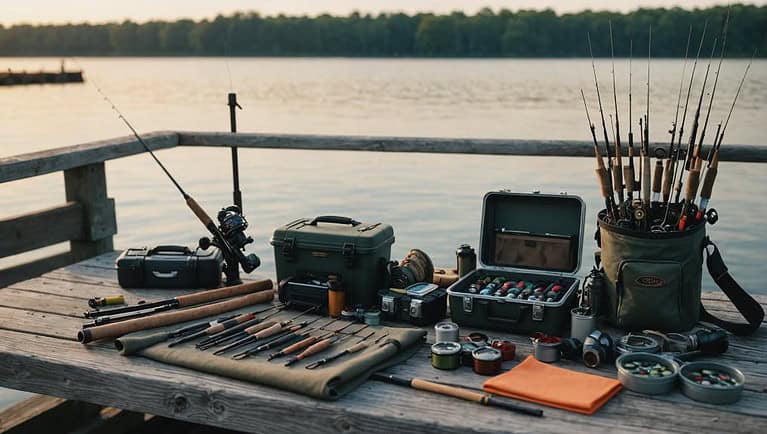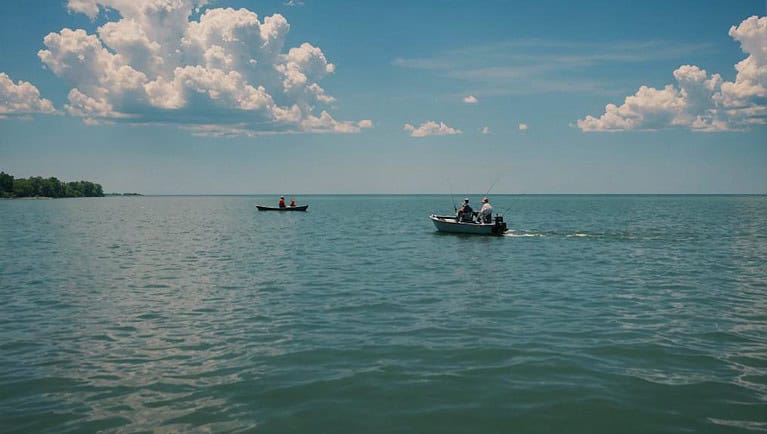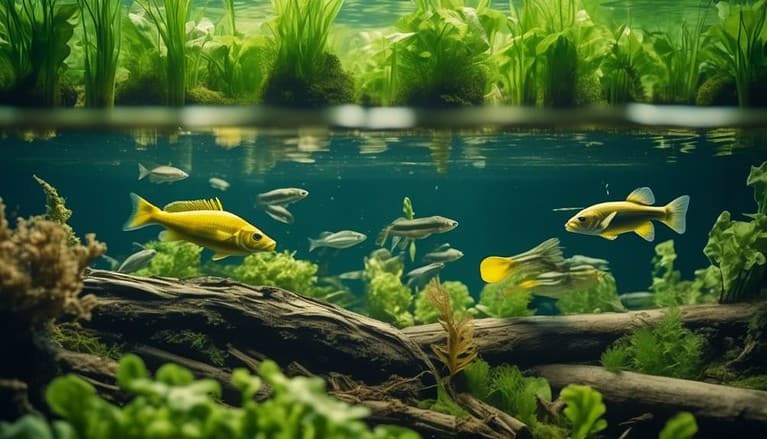Kayak Fishing on Lake Erie: A Beginner’s Guide
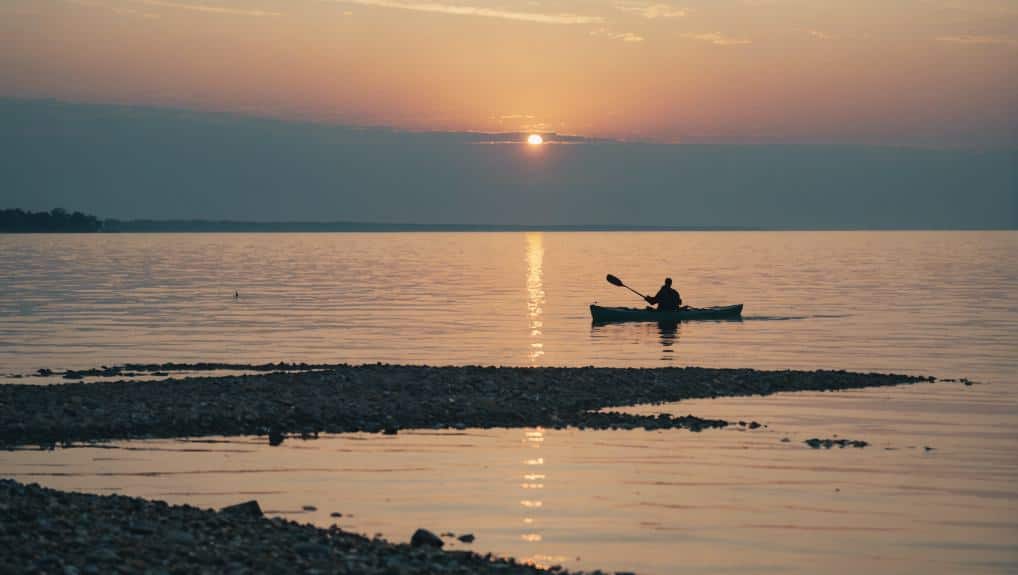
Kickstart your kayak fishing adventure on Lake Erie with this beginner’s guide! You’ll need essential gear like a large net, catch board, and clip weights for a successful outing. Opt for a sit-on-top kayak with ample storage and built-in rod holders. Safety first—wear a properly fitted life jacket and always check weather forecasts. Utilize GPS and apps like Navionics for navigation, and Windfinder for precise wind info. Fish for walleye, smallmouth bass, and more, using effective lures and mastering clip weight setups. Practice responsible catch and release to preserve the ecosystem. There’s so much more to discover!
Main Points
- Choose a sit-on-top kayak with ample storage and built-in rod holders for stability and convenience.
- Wear a Coast Guard-approved life jacket and monitor weather forecasts for safety.
- Use GPS and weather apps like Navionics and Windfinder for navigation and real-time conditions.
- Target walleye, smallmouth bass, yellow perch, and steelhead trout using appropriate seasonal techniques and lures.
- Practice responsible catch and release with barbless hooks and minimal handling to preserve fish survival and ecosystem health.
Essential Gear

When you’re gearing up for kayak fishing on Lake Erie, having a large net for safely landing fish is absolutely essential. Imagine the thrill of reeling in a walleye, only to lose it at the last moment because you didn’t have the right net! A sturdy, large net guarantees you can securely catch fish and bring them onboard without hassle.
Another must-have is a catch carbonate board. This handy tool lets you measure and document your catches quickly and efficiently. It’s not just about bragging rights; it’s also about understanding the size and health of Lake Erie’s fish population.
For walleye fishing, clip weights are game-changers. These weights help you control the depth of your lures, making it easier to target walleye effectively. Walleye are known to hang out at specific depths, and using clip weights can help you reach those sweet spots.
Pair these with stick baits and trolling spoons, which are proven lures for walleye, and you’ll increase your chances of a successful catch.
Understanding how to set up clip weights and adjust lure distances can truly optimize your fishing experience, turning Lake Erie into your personal angling paradise.
Choosing a Kayak
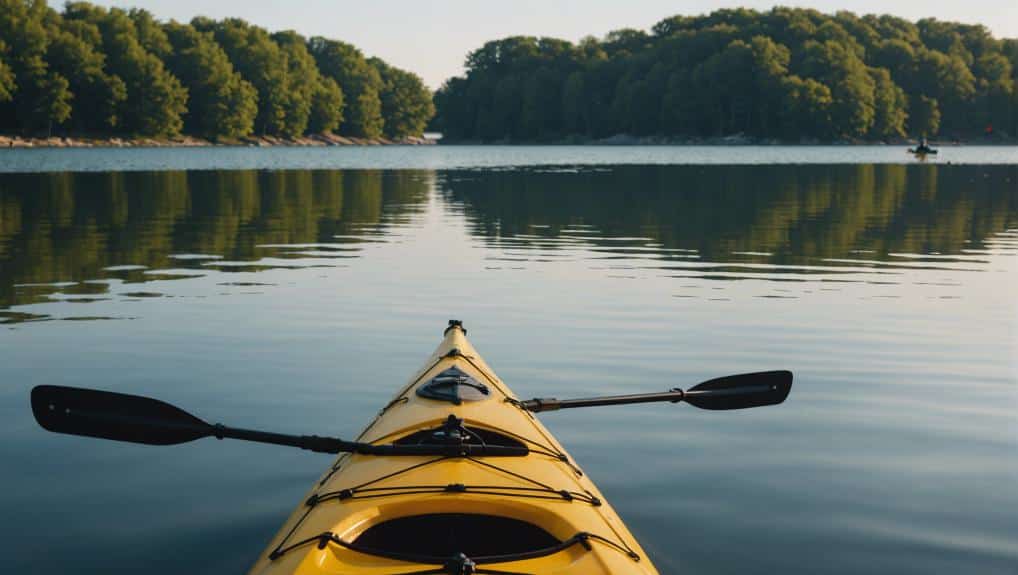
You’ve got your gear ready, so now let’s focus on choosing the perfect kayak for your Lake Erie fishing adventures.
When it comes to stability and ease of entry and exit, a sit-on-top kayak is your best bet. Lake Erie’s waters can be unpredictable, and you’ll appreciate the stability these kayaks offer, especially when you’re reeling in a big catch.
For the best time on the water, look for a kayak that’s 10-12 feet in length. This size strikes a balance between maneuverability and tracking, allowing you to navigate varying water conditions with ease. Plus, a kayak of this length is generally easier to transport and store.
Storage is another important factor. Your kayak should have ample space to stow your fishing gear and safety equipment. Look for models with built-in compartments or bungee storage areas to keep everything secure.
Comfort is key for long hours on Lake Erie. Choose a kayak with adjustable footrests and a comfortable seat. This will help you avoid fatigue and enjoy your trip more.
To wrap up, built-in rod holders or the option to add aftermarket ones will make your fishing experience much more convenient.
Happy fishing!
Safety Precautions
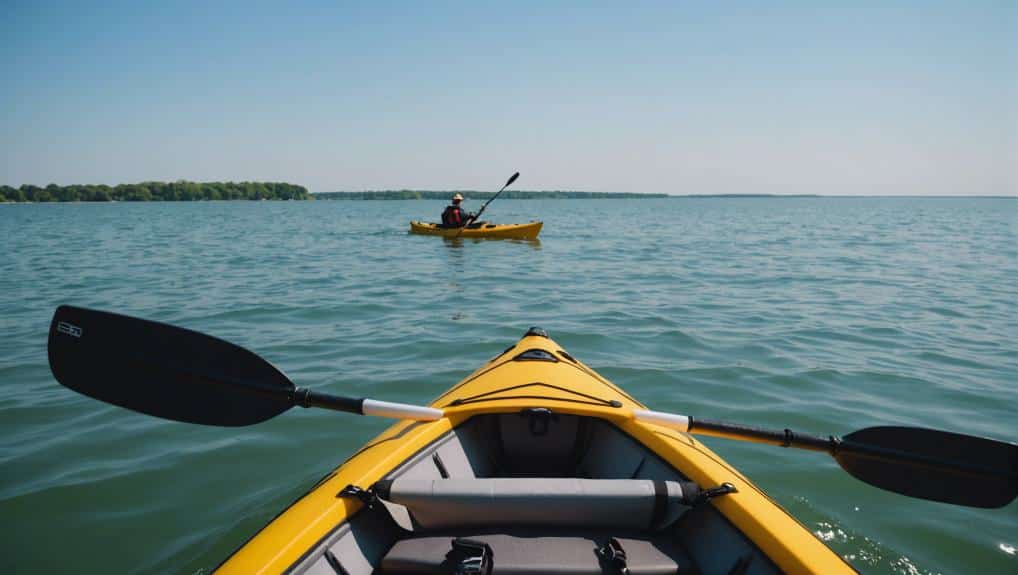
When you’re out on Lake Erie, your safety is paramount, so always wear a Coast Guard-approved life jacket.
Before you head out, check the weather forecast to avoid unexpected storms or rough waters.
With these steps, you’ll be ready for a safe and enjoyable kayak fishing experience.
Wear Personal Flotation Device
Wearing a properly fitted personal flotation device (PFD) is essential for ensuring your safety while kayak fishing on Lake Erie. The U.S. Coast Guard requires all kayakers to have a wearable PFD on board, and for good reason. The flip side of enjoying a day on the lake is dealing with unpredictable conditions like wave height, which can change swiftly and dramatically.
Even on days when the weather forecast seems pretty accurate, Lake Erie’s waters can surprise you. A PFD designed specifically for kayaking offers features like high visibility colors, multiple adjustment points, and pockets for storing essential items. These features not only make your PFD comfortable but also practical. Keeping afloat and visible to rescuers in case of an emergency increases your chances of survival significantly. It’s not just about compliance with regulations; it’s about your life.
Make sure you regularly inspect your PFD for any signs of wear or damage. A torn or worn-out PFD won’t provide the protection you need. Always follow safety guidelines and wear your PFD every time you hit the water. Your adventure on Lake Erie will be all the more enjoyable knowing you’ve taken this important safety step.
Check Weather Forecast
While your PFD is a cornerstone of safety, checking the weather forecast is equally essential for a successful and safe kayak fishing trip on Lake Erie. Don’t just rely on luck; utilize resources like windfinder.com and AccuWeather to get real-time wind and weather conditions. These tools are invaluable for monitoring wind speed, wave height, and potential storms.
Before you head out, try to keep an eye on live streaming cameras and weather buoys. They provide up-to-the-minute updates that can help you make informed decisions. Adjust your plans according to the forecast, paying close attention to your distance from shore and the direction of the wind for navigation.
Visibility is another key aspect. I’m thinking you should use safety flags and wear bright clothing, especially when the weather is changing. This ensures other boaters can see you easily.
Always be aware of storm and cloud movements. Have a plan in place for seeking shelter or returning to shore if conditions worsen.
Prioritizing weather checks can greatly enhance your safety and enjoyment on Lake Erie.
Happy fishing, and stay safe out there!
Navigation Tools
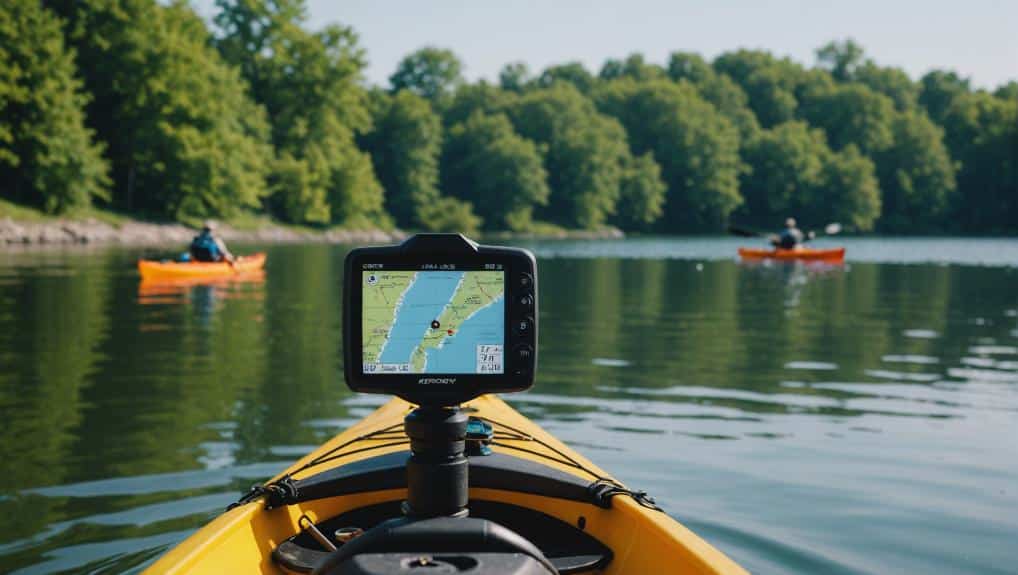
Exploring the expansive waters of Lake Erie is a breeze with the right tools and a bit of preparation. When it comes to finding your way, GPS navigation systems are your best friend. Using apps like Navionics, you can easily chart out your kayak fishing route and make sure you stay on track. These apps provide detailed water maps and electronic charts, giving you a clear picture of the lake’s layout, including depth changes and potential fishing spots.
Don’t forget to keep an eye on real-time data. Monitoring your distance from shore is essential, especially if weather conditions begin to shift. Live buoys can provide you with up-to-date information on wind speed and wave height, helping you make informed decisions about your course. Adjusting your route based on these factors can keep your journey smooth and safe.
Visibility is another key aspect of exploring Lake Erie. Using safety flags and wearing bright clothing will make sure that other boaters can spot you easily, reducing the risk of collisions.
With these tools for direction, you’ll not only enhance your safety but also boost your confidence as you navigate Lake Erie’s vast waters.
Weather Apps

When planning your next kayak fishing trip on Lake Erie, weather apps are indispensable tools that can help you navigate safely and maximize your fishing success. Using apps like Windfinder.com, you can get accurate wind direction forecasts tailored specifically for Lake Erie. This lets you plan your trip with precision, ensuring your gear organization is spot on and you’re prepared for any changes in the weather.
AccuWeather provides real-time radar updates, which are essential for emergency communication. You’ll know exactly when a storm is approaching, giving you ample time to head back to shore safely. Live streaming cameras around Lake Erie offer visual insights into current conditions, making it easier to adjust your fishing strategies. Are the waves too high? Is the water temperature ideal? These cameras help you anticipate potential challenges.
Don’t forget to check live weather buoys for wind speed and wave height data. This information is crucial for making informed decisions about your fishing locations. Additionally, knowing the tides and moon phases can have a significant impact on your fishing success. With these apps, you’ll be well-prepared, safe, and ready to reel in your next big catch!
Target Fish Species
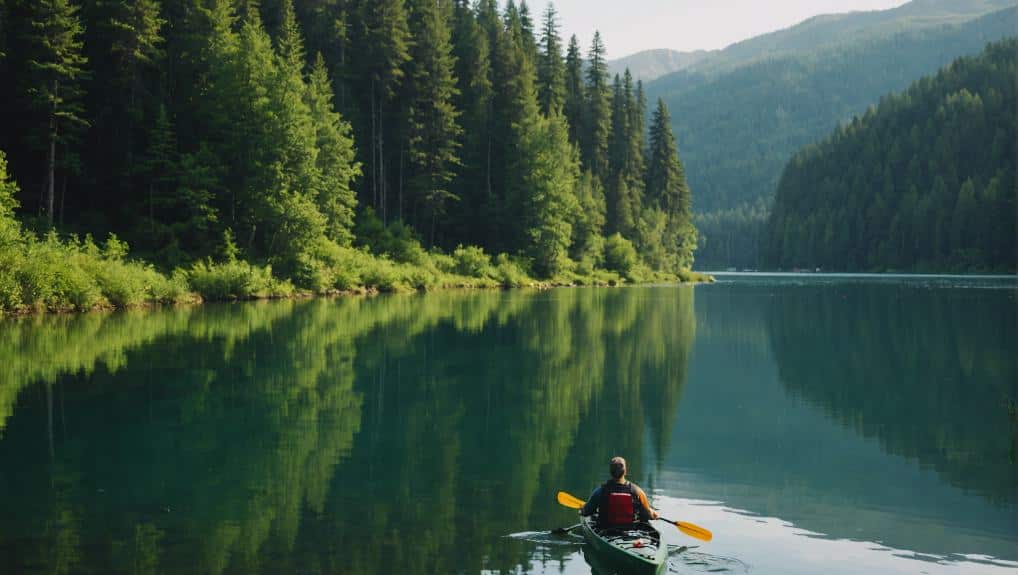
When you’re kayak fishing on Lake Erie, you’ll have the chance to catch some exciting game fish like walleye, smallmouth bass, yellow perch, and steelhead trout.
Each species has its own seasonal patterns, so knowing when and where to fish can make all the difference.
Get ready for some thrilling battles and delicious rewards as you explore these waters!
Popular Game Fish
Lake Erie offers an exciting variety of game fish for kayak anglers, including walleye, smallmouth bass, yellow perch, and steelhead trout. Each species presents its own unique challenge and thrill.
Walleye are known for their delicious taste and challenging fight. To catch them, you’ll want to use trolling techniques with crankbaits or bottom bouncers. Pay attention to their behavior; they often hang out near drop-offs and structures.
Smallmouth bass are the acrobats of Lake Erie. These aggressive fighters love to strike at soft plastics and crankbaits. Cast near rocky areas or submerged structures where they like to hide. Understanding their behavior will help you pinpoint the best spots to fish.
Yellow perch are abundant and highly prized for their tasty white meat. Use small jigs tipped with minnows or worms. Keep an eye on your fish finder; they’re often found in schools and prefer cooler, deeper waters.
Steelhead trout, or steelies, offer a thrilling experience with powerful runs and acrobatic jumps. Drifting or casting with spoons and spinners works well. Look for them near tributary mouths, especially during their migration periods.
Each of these game fish offers a unique and rewarding experience on Lake Erie.
Seasonal Fishing Patterns
Understanding the seasonal fishing patterns on Lake Erie can significantly increase your chances of landing that trophy fish. Each season brings unique opportunities to target different species, making it essential to know where and when to fish.
In the spring, walleye are your prime target. Head to the Western Basin and around the islands, where walleye move to shallow waters for spawning. It’s an exciting time because these fish are abundant and ready to bite.
When summer rolls around, shift your focus to smallmouth bass. These fighters are found around rocky structures and drop-offs in the central and eastern basins. The warm weather and clear waters make for an enjoyable and productive fishing experience.
As winter sets in, steelhead trout become the star of the show. The tributaries, such as the Grand River and Conneaut Creek, are hotspots. Use spawn sacks and jigs to lure these beauties in. Steelhead fishing in the crisp winter air is a challenge worth taking.
Here’s a quick guide to help you:
| Season | Target Fish | Prime Locations |
|---|---|---|
| Spring | Walleye | Western Basin, around islands |
| Summer | Smallmouth Bass | Rocky structures, drop-offs |
| Winter | Steelhead Trout | Grand River, Conneaut Creek |
Knowing these patterns ensures you’ll make the most of your time on the water.
Best Fishing Spots
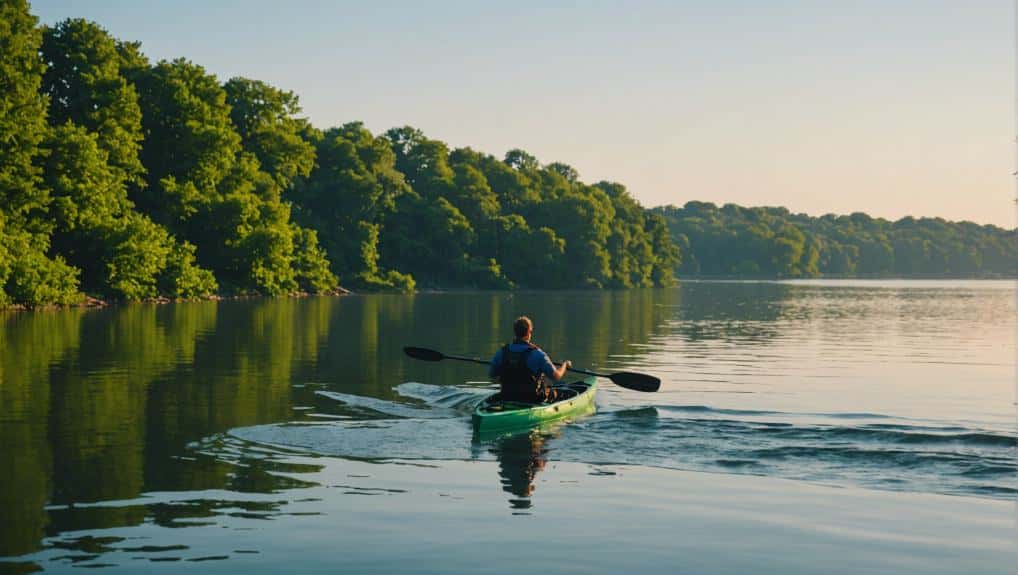
Discovering the best fishing spots on Lake Erie can transform your kayak fishing adventure into an unforgettable experience. For starters, the Western Basin is a prime location, especially around the Bass Islands and Kelley’s Island. Here, you’ll find excellent walleye fishing opportunities. Your tackle selection should include medium to heavy rods and reels to handle these strong fish. As for bait choices, live minnows and nightcrawlers work wonders.
Heading towards the Central Basin, the reefs near Port Clinton are another hotspot. These structures attract a variety of fish, making your fishing techniques essential. Jigging and trolling over these reefs can yield impressive catches of walleye. Don’t forget to adjust your tackle selection to include a variety of jigs and crankbaits.
In the Eastern Basin, the rocky shoreline of Marblehead Peninsula and the waters around Kelleys Island State Park are known for their quality catches. Targeting specific structures like drop-offs and weed beds can greatly boost your success rate. Using soft plastics and spinnerbaits here can be particularly effective.
Lastly, the Lake Erie Islands, including South Bass Island and Middle Bass Island, offer diverse catches of walleye, smallmouth bass, and perch. Employing versatile fishing techniques and adapting your bait choices to the prevalent fish species can make all the difference.
Effective Lures
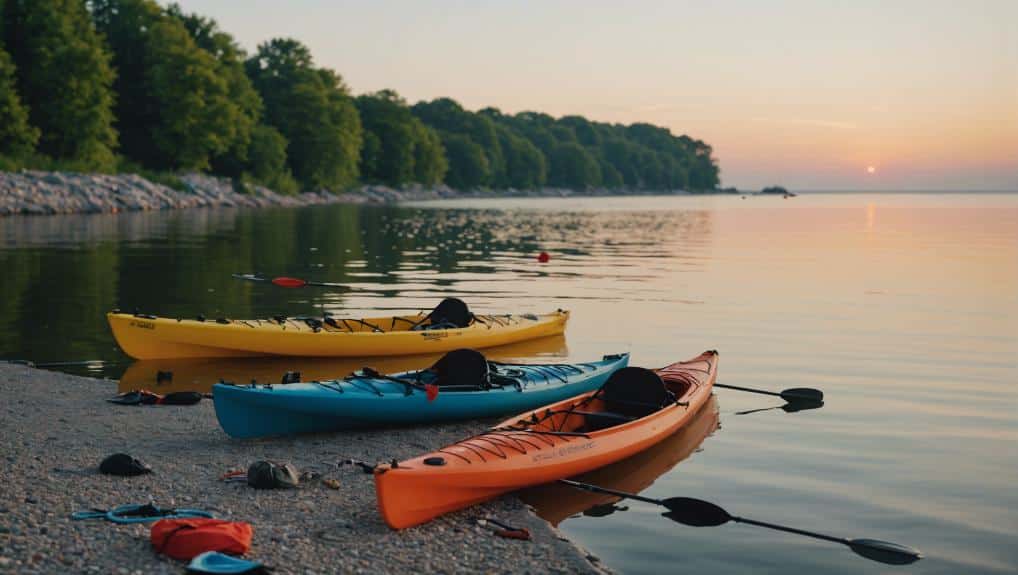
When it comes to kayak fishing on Lake Erie, selecting the right lures can be the game-changer that turns an ordinary trip into a trophy-winning adventure. For targeting walleye, stick baits like the Rapala Husky Jerk and Smithwick Perfect 10 are excellent choices. Their realistic lure presentation mimics the natural movement of baitfish, enticing walleye to strike.
Color selection plays an essential role in your success. Bright colors can attract walleye in murky waters, while natural colors are perfect for clear conditions.
| Lure Type | Popular Choices |
|---|---|
| Stick Baits | Rapala Husky Jerk |
| Smithwick Perfect 10 | |
| Trolling Spoons | Moonshine Lures |
| Michigan Stinger | |
For effective trolling techniques, try using trolling spoons like Moonshine Lures or Michigan Stinger. Adjusting the depth of your lures through depth adjustment is key; walleye often feed at different depths depending on the time of day and water temperature.
Understanding walleye behavior and feeding habits can significantly enhance your catch rate. Walleye typically feed more aggressively during low-light conditions, making early mornings and late evenings prime fishing times. Experiment with various lure sizes and colors to match the walleye’s preferences, and don’t hesitate to change tactics as you learn more about their habits on Lake Erie.
Setting Up Clip Weights
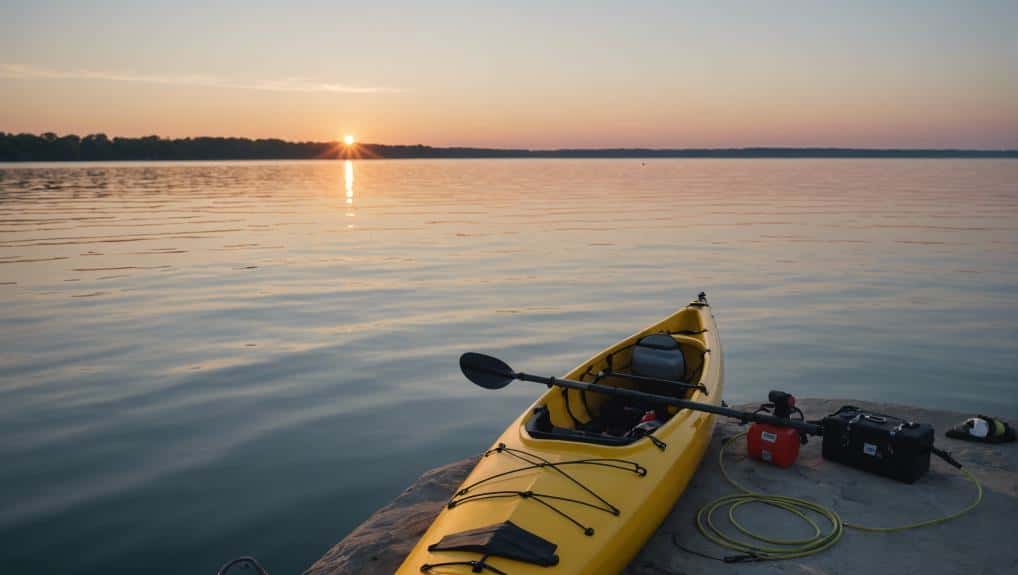
Mastering the art of setting up clip weights can greatly enhance your success rate when kayak fishing for walleye on Lake Erie. Clip weights are your secret weapon for controlling the depth at which your lures or baits are presented, ensuring you’re fishing where the walleye are feeding.
One of the significant clip weight benefits is their versatility. By attaching them at specific distances from your lure, you can target different water column depths effectively.
To start, you’ll need to understand depth control techniques. Knowing how far to place the clip weights from your lure is essential. For instance, if you want to reach deeper waters, you’ll attach the clip weight further up the line. Conversely, for shallower depths, place it closer. This flexibility lets you adapt to the walleye’s feeding habits, as they can be at varying depths throughout the day.
Adjusting for current conditions is also important. Lake Erie’s currents can shift, impacting lure depth. By moving your clip weights along the line, you can maintain the desired depth even when the water conditions change.
Master this, and your chances of a successful catch will skyrocket!
Catch and Release Tips
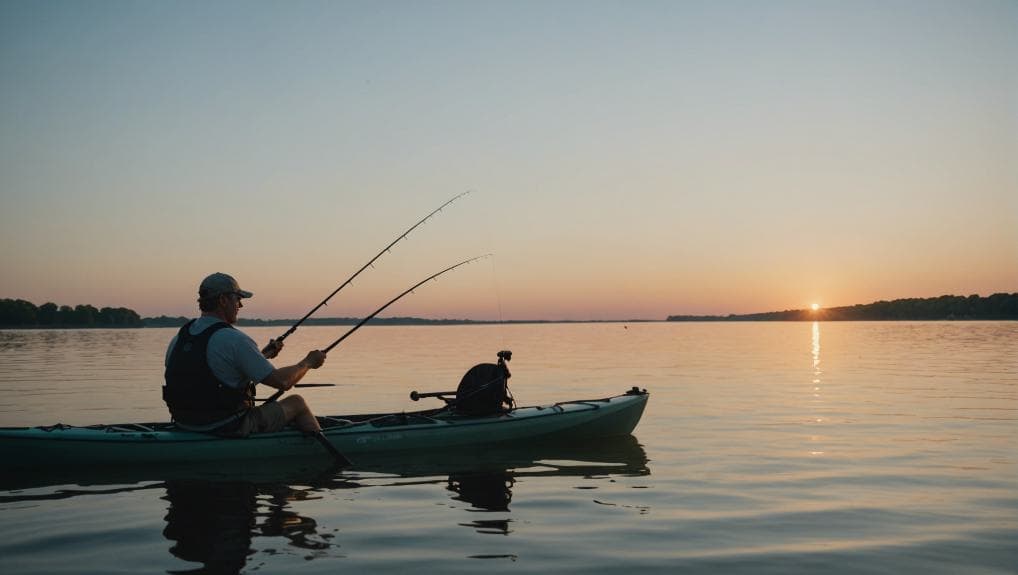
When you’re out kayak fishing on Lake Erie, it’s important to handle fish properly to guarantee their survival. Use barbless hooks and keep the fish in the water while unhooking to minimize stress.
Handling Fish Properly
Ensuring you handle fish properly during catch and release is essential for their survival and the overall health of Lake Erie’s ecosystem. Start with proper grip techniques—use wet hands or gloves to protect the fish’s delicate slime layer, which is important for their health.
Understanding fish behavior is important; they’re more vulnerable out of water, so minimize handling time.
Adhering to fish handling etiquette means using tools like lip grippers or dehooking tools. These help you release the fish without causing harm.
When it’s time to release, practice effective releasing techniques by gently placing the fish back in the water. Support their body until they swim away on their own. This reduces stress and increases their survival chances.
Being a responsible angler also means employing conservation methods to ensure fish survival. Using barbless hooks can minimize damage to the fish’s mouth, making it easier for them to recover.
Keep the fish in the water as much as possible to maintain their oxygen levels. Every small step you take in handling fish properly contributes to the conservation of Lake Erie’s vibrant aquatic life.
With these tips, you’re not just fishing—you’re helping preserve an ecosystem.
Minimizing Fish Stress
Reducing fish stress during catch and release starts with using barbless hooks and keeping the fish in the water as much as possible. These stress reduction techniques are essential for the fish’s well-being and have significant conservation benefits. By minimizing the impact on fish survival, you’re doing your part in maintaining a healthy ecosystem in Lake Erie.
Here are some key steps to make sure you’re practicing ethical considerations while fishing:
- Use barbless hooks: They make it easier to release the fish quickly, reducing the time the fish spends out of water.
- Minimize handling: Wet your hands or gloves before touching the fish to protect its delicate skin and avoid excessive handling.
- Support the fish properly: Hold the fish gently, supporting its body without squeezing or applying unnecessary pressure.
- Quick photo and release: If you want a photo, be quick and efficient, then gently place the fish back into the water.
The importance of quick release and proper handling techniques can’t be emphasized enough. By following these guidelines, you’re not only ensuring the fish’s health but also contributing to the broader conservation efforts.
Keep these tips in mind, and you’ll become a more responsible and ethical kayak angler on Lake Erie.
Conclusion
You’ve now got the basics to start your kayak fishing adventure on Lake Erie! Remember, safety first—over 80% of kayaking accidents happen to those not wearing life vests. So, always wear yours.
With the right gear, a reliable kayak, and some handy apps, you’ll be exploring Lake Erie’s best fishing spots in no time. Get ready to reel in some impressive catches and create unforgettable memories on the water.
Happy fishing!
